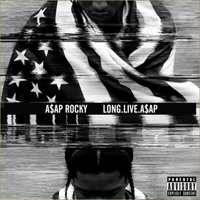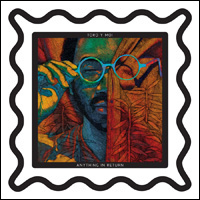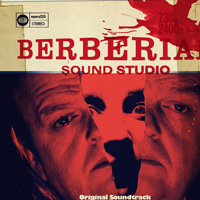Music Reviews, 02/2013

This issue
A$SAP Rocky, Long Live A$AP
Yo La Tengo, Fade
Toro Y Moi, Anything in Return
Broadcast, Berberian Sound Studio
A$AP Rocky | Long.Live.A$AP
Polo Grounds/RCA
by James Brubaker
 I’m not sure I quite get A$AP Rocky. At times, the young, rising star seems almost aggressively vapid. Case in point, the mind-blowingly stupid/simple hook on “PMW (All I Really Need)”: “Pussy, money, weed,” a pitched-down voice chants, “It’s all a nigger need.” The lyric raises a number of questions, most notably, how can money be a need in and of itself. The idea that all a person needs is money seems disingenuous as money exists solely for the purpose of exchange. So we consider this: maybe Rocky needs the money to purchase his weed and sex. But for a guy who made three million bucks on a record deal before even properly releasing his first mixtape, this doesn’t seem quite right either. The question remains: why is money one of the only things Rocky needs. And it is needs, mind you, not wants. How about this: in Rocky’s recipe for success money exists not for the purpose of exchange, but solely as a signifier of status. By the song’s end, we get the sense that food, shelter, clothing, medicine, etc…, none of it matters so long as Rocky’s got that money, and the subsequent status. So why isn’t the song a huge club-banger? Why does the song actually sound kind of grim? We’ll come back to that.
I’m not sure I quite get A$AP Rocky. At times, the young, rising star seems almost aggressively vapid. Case in point, the mind-blowingly stupid/simple hook on “PMW (All I Really Need)”: “Pussy, money, weed,” a pitched-down voice chants, “It’s all a nigger need.” The lyric raises a number of questions, most notably, how can money be a need in and of itself. The idea that all a person needs is money seems disingenuous as money exists solely for the purpose of exchange. So we consider this: maybe Rocky needs the money to purchase his weed and sex. But for a guy who made three million bucks on a record deal before even properly releasing his first mixtape, this doesn’t seem quite right either. The question remains: why is money one of the only things Rocky needs. And it is needs, mind you, not wants. How about this: in Rocky’s recipe for success money exists not for the purpose of exchange, but solely as a signifier of status. By the song’s end, we get the sense that food, shelter, clothing, medicine, etc…, none of it matters so long as Rocky’s got that money, and the subsequent status. So why isn’t the song a huge club-banger? Why does the song actually sound kind of grim? We’ll come back to that.
Despite the straightforward needs expressed on “PMW,” A$AP Rocky’s Long.Live.A$AP is an album that concerns itself primarily with a currency of a different kind, and it is through this concern that Long.Live.A$AP asserts itself as an impressive hip hop album. The currency I’m talking about is a cultural currency, demonstrated by Rocky’s seeming ability to observe and encompass a large cross-section of popular music within the confines of his album. On the aforementioned “PMW,” Schoolboy Q makes a slick guest turn. On “Hell,” Santigold pops into deliver a killer hook. The driving beat and synths of “Fuckin’ Problems” are nicely complemented by guest spots from Drake, 2 Chainz, and Kendrick Lamar. Kendrick shows up again on “1 Train,” which also plays out like an emptying clown car of MC’s, with brief appearances from Joey Bada$$, Yelawolf, Big K.R.I.T., Action Bronson, and a typically (and wonderfully) unhinged Danny Brown. Hell, even “Wild for the Night,” Rocky’s collaboration with Skrillex earns the distinction of being a) the only Skrillex-related song I’ve listened to from start to finish, and b) the only Skrillex-related song I ever wanted to listen to again. I don’t mean to turn this review into a summary of the album’s guest spots, but it is this excellent assemblage of personalities and ideas that gives Long.Live.A$AP so much of its charm. Add to this generous array of guests some top notch production from the likes of Clams Casino, Jim Jonesin and T-Minus, and Long.Live.A$AP sets a high bar for hip hop in 2013. As uniformly strong as the album’s production manages to be, as on Live.Love.A$AP, Clams Casino steals the show, this time with “LVL,” and “Hell,” and, as before, Clams Casino’s haunted, elegant productions provide a rich counterpoint to Rocky’s rough and raw delivery.
And this is why Clams Casino is a perfect producer for Rocky’s work—as with Nikhil “Kromatik” Seetharam & T-Minus grim production on “PMW,” Mike Volpe’s work as Clams Casino opens a richly textured, dark, and daunting landscape that provides a sense of foreboding that undercuts Rocky’s big boasts about fashion, murder, and fucking. The end result is not one of celebration—we don’t hear an endorsement of Rocky’s rhymes in the production, but a hollow, alienated, sci-fi inflected soundscape that re-spins Rocky’s rhymes (“Never met a motherucker fresh like me/All these motherfuckers want to dress like me”) in ways that make them play a little sadder, and a little more sinister than they might read on the page. By the time we reach album ender “Suddnely,” that song’s low key prayer’s to nostalgia don’t feel at all out of place on an album that isn’t quite as big, wild, and raucous as it first seems.
In the end, there isn’t a bad song on Long.Live.A$AP, and while it’s hard to find a clear through line for the album, Rocky’s impulses as a hip hop auteur are impressive. By bringing together the perfect cast to compliment his strengths, and by balancing the big braggadocio with moments of surprisingly quiet clarity (via much of the album’s production, and the quiet reflections on “Phoenix,” for example, or the grim memories of “Suddenly”), A$AP Rocky establishes himself as a thoughtful and impressive hip hop star at the beginning of what should be an impressive career.
Yo La Tengo | Fade
Matador Records
by Brian Flota
 Last year, journalist Jesse Jarnow’s Big Day Coming: Yo La Tengo and the Rise of Indie Rock landed on bookshelves. Having not read the book, I often joke with a fellow YLT fan that even the idea of reading such a book can’t be anything but dull. Why? Instead of reading scintillating details about epic, condom-free sexcapades, intravenous drug use, carpet farming for rocks of crack, ridiculously unwise business deals, and profanity-laced interviews, what would make up the bulk of a biography of Yo La Tengo?: stories about enjoying cappuccinos, listening to French pop records BUT NOT TOO LOUD, holding hands, and yarn parties with cats? While all these things are among life’s simpler pleasures, they don’t exactly add up to an appearance on VH1’s Behind the Music.
Last year, journalist Jesse Jarnow’s Big Day Coming: Yo La Tengo and the Rise of Indie Rock landed on bookshelves. Having not read the book, I often joke with a fellow YLT fan that even the idea of reading such a book can’t be anything but dull. Why? Instead of reading scintillating details about epic, condom-free sexcapades, intravenous drug use, carpet farming for rocks of crack, ridiculously unwise business deals, and profanity-laced interviews, what would make up the bulk of a biography of Yo La Tengo?: stories about enjoying cappuccinos, listening to French pop records BUT NOT TOO LOUD, holding hands, and yarn parties with cats? While all these things are among life’s simpler pleasures, they don’t exactly add up to an appearance on VH1’s Behind the Music.
Yo La Tengo have long given the appearance of being rock’s most well-adjusted band, and this has served them well. Their combination of musical influences–which extend from the standards of George Gershwin and Hoagy Carmichael to Sun Ra and the rawkus, twee no wave of Half Japanese–and earnest love songs have formed the backbone of indie-rock since they first burst onto the scene in 1984. After making a handful of excellent albums in the 1990s, they have been treading water as album artists over the last thirteen years or so. By making albums geared toward CD release, their albums, especially I Am Not Afraid of You and I Will Beat Your Ass (2006) and Popular Songs (2009), have tended to be overly long and so stylistically diverse that they lack the coherence necessary to sustain their 70 minute run times. With their latest release, the understated Fade, Yo La Tengo return to the approach that helped make And Then Nothing Turned Itself Inside Out (2000) into one of the landmarks of their voluminous discography. It is also the first album of theirs in 20 years (1993’s Painful) to lack a song longer than eight minutes long, marking a refreshing turn toward concision, the full album clocking in at a paltry 48 minutes.
Fade is by no means a great album, but is a focused one that gets a little better with each new listen. The record begins with “Ohm,” the kind of song Yo La Tengo can churn out in their sleep. It is a solid rocker in the tradition of “Barnaby, Hardly Working” (1986), “Sugarcube” (1997), and “Cherry Chapstick” (1999), though not quite as abrasive. Once one gets into the album, though, it seems like an odd choice, as none of the songs–save for the even more reserved rocker “Paddle Forward”–really resemble it. After “Ohm,” the record struggles out of the gate, as YLT retreats to the land of lounge–one of their weakest tendencies–on “Is that Enough” and “Well You Better.” After the aforementioned “Paddle Forward,” the album really begins to deliver. Songs that tended toward the tedious on their previous albums, those slower, plodding, meditative love songs (see, for example, the eleven-minute snoozer from Popular Songs, “The Fireside”), are given shape here, and it is a revelatory development. “Stupid Things” and “Cornelia and Jane” unfold slowly, ultimately generating a placid intensity aided by unobtrusive horn and string arrangements. The closer, “Before We Run,” is easily one of Yo La Tengo’s most haunting performances, and their best foray into chamber pop to date.
One of the reasons Fade succeeds is its focus. Instead of trying to show off their vast knowledge of popular and underground music forms, Yo La Tengo harness their energies into intimate tracks that are given time to breathe and expand in unforced ways. While their post-And Then Nothing records have boasted some great individual songs, (like I Am Not Afraid of You‘s “Pass the Hatchet, I Think I’m Goodkind” and “The Story of Yo La Tango” and Popular Songs‘ “Nothing to Hide” and “And the Glitter is Gone”), they have not been surrounded by suitable peers. Fade lacks a single as good those I just mentioned. However, the bulk of the tracks are solid. Furthermore, the album flows quite well, organically building its way to the emotionally resounding “Before We Run.” Fade is YLT’s best album in years, and those who have stuck around with them for all the years should be pleasant surprised.
Toro y Moi | Anything in Return
Carpark
by James Brubaker
 In a brief feature on Interview Magazine’s website, Chaz Bundick, talking about his new Toro y Moi record, Anything in Return said, “I’m just trying to make sincere pop music that’s not all processed and bubblegum. Underground isn’t always relevant; I want to see what’s popular, then put my own spin on it.” To that end, Anything in Return is a hugely successful album. While the transition from 2010’s Causers of This to 2011’s Underneath the Pine found Bundick trading lo-fi chillwave for a hyper-aware, disco-funk-pop hybrid, it’s just as easy to see the transition to Anything in Return as yet another shift away from the underground toward sincere pop music.
In a brief feature on Interview Magazine’s website, Chaz Bundick, talking about his new Toro y Moi record, Anything in Return said, “I’m just trying to make sincere pop music that’s not all processed and bubblegum. Underground isn’t always relevant; I want to see what’s popular, then put my own spin on it.” To that end, Anything in Return is a hugely successful album. While the transition from 2010’s Causers of This to 2011’s Underneath the Pine found Bundick trading lo-fi chillwave for a hyper-aware, disco-funk-pop hybrid, it’s just as easy to see the transition to Anything in Return as yet another shift away from the underground toward sincere pop music.
But there is something about Bundick’s claim that “Underground isn’t always relevant” that feels a bit disingenuous when listening to Anything in Return. On its surface, Toro y Moi’s latest is crisp and clear pop music built out of slick beats, catchy hooks, and meticulously layered arrangements that sound nothing if not contemporary. But there’s a subtle pull to Anything in Return, something not quite tangible tugging at each of Bundick’s pristine pop soundscapes, making the whole album feel slightly out of phase with itself. This is not to the album’s detriment. In fact, it is the album’s subtly unsettling undercurrent that elevates Bundick’s pop songs beyond the artist’s stated goal of making a sincere pop record. Of course, there is nothing wrong with making sincere pop music, and many of Anything in Return’s strengths arise from its pop impulses.
But this album’s confluence of musical elements that stray a hair too far out of the mainstream to be classified as pure pop lend the whole album a sense of otherworldliness, making it a sort of uncanny valley of pop. On “Say That,” the icy synths, and driving beat are subtly undercut by Bundick’s tired vocal delivery, lending the song an air of alienation and cool detachment. The song’s off-kilter feel is complimented by the odd vocal samples woven into the composition—a woman’s soulful, wordless enunciations that are warped, chopped, slowed, and sped back up as the song progresses, and an odd, occasional “Yeah,” spoken in a man’s voice. Both samples, while well within the comfort-zones of dance and pop music, serve to unsettle the song’s otherwise smooth, sonic sheen. Even the song’s chorus, “She’s alright, I’m alright/We’re alright, we can’t go back,” despite its claims to the speaker’s alright-ness, plays as emotionally distant thanks to the juxtaposition of Bundick’s cold vocals with the track’s quietly weird production.
Bundick makes similar moves across the rest of the album’s thirteen tracks. “Rose Quartz,” is buoyed by its own set of just off vocal samples. The down-tempo “Cola,” is all bass rumbles and Bundick’s vaguely soulful voice until swaying synths transform the song into an eerie future jam. By the time we reach “Cake,” one of the album’s simplest, most exuberant songs, the grainy keyboards and background vocal chirps have come to feel normal, allowing us to get lost in the track’s earnest expressions of romantic commitment: “She knows I’m going to be her boy forever.”
To this end, Bundick’s songs on Anything in Return play out more like a subversive attempt to transcend pop music’s frustrating limitations than a simple attempt to “Make sincere pop music.” And that’s what makes Anything in Return such an affecting album—Bundick draws on familiar sounds, textures, and tropes, but the way he puts them together leads to something that sounds a lot like straightforward pop music, but is somehow more compelling. Another reading of the album’s subtly unsettling shifts against pop music, is that this is what sincere pop music actually is for Bundick, and if that’s the case, we should all be grateful that he decided to let us into his head for Anything in Return. Come to think of it, maybe I’ve been misreading Bundick’s use of “sincere” this whole time. Afterall, in that quote from Interview Magazine, Bundick says, “I want to see what’s popular and put my own spin on it.” And that is exactly what Bundick did—he synthesized the raw components of contemporary pop and transformed them into Toro y Moi’s slightly warped version of pop.
Broadcast | Berberian Sound Studio
Warp Records
by Brian Flota
 The soundtrack for Peter Strickland’s 2012 film Berberian Sound Studio (which stars Toby Jones) is the first full-length release by Broadcast (which now solely consists of James Cargill) since the tragic, pneumonia-related death of lead singer Trish Keenan in early 2011. Broadcast was never a particularly prolific act, releasing only three proper albums and a handful of EPs and side-projects since their formation in 1995. Their most recent album–if we exclude their collaboration with The Focus Group in 2009–Tender Buttons (2005), remains one of the freshest albums from that era, a disorienting yet remarkably catchy piece of warped synth-pop in the tradition of 60s psychedelic act The United States of America and 90s indie-rock titans Stereolab. Therefore, it is a shame that Berberian Sound Studio is such a mess.
The soundtrack for Peter Strickland’s 2012 film Berberian Sound Studio (which stars Toby Jones) is the first full-length release by Broadcast (which now solely consists of James Cargill) since the tragic, pneumonia-related death of lead singer Trish Keenan in early 2011. Broadcast was never a particularly prolific act, releasing only three proper albums and a handful of EPs and side-projects since their formation in 1995. Their most recent album–if we exclude their collaboration with The Focus Group in 2009–Tender Buttons (2005), remains one of the freshest albums from that era, a disorienting yet remarkably catchy piece of warped synth-pop in the tradition of 60s psychedelic act The United States of America and 90s indie-rock titans Stereolab. Therefore, it is a shame that Berberian Sound Studio is such a mess.
Consisting of 40 “songs,” most of which last only 30 seconds or so, Berberian Sound Studio goes nowhere, and nowhere fast, as an album. Because of the truncated nature of most of the tracks, the album sputters as an ambient document, because once any sort of tone is established, the track is already over. Clearly removing these brief snippets from the context of the film for which they were intended removes the kinetic impact they must surely have within the film. The album’s two longer cuts, “Our Darkest Sabbath” (which musically alludes to the nursery rhyme “Frere Jacques”) and “Teresa, Lark of Ascension,” are easily the most interesting things the soundtrack has to offer. The latter, one of the few tracks which features any noticeable vocal contributions from Keenan, hints at the kind of music Broadcast still had in them. “Teresa” bears a striking resemblance to the music artists like Julianna Barwick and Julia Holter are making today.
It is revealing that Berberian Sound Studio heavily flirts with the avant-garde, just as they did on Broadcast and The Focus Group Investigate Witch Cults of the Radio Age (2009). It can lead to speculation about what a future, proper full-length Broadcast album might have sounded like had Trish Keenan not passed away. As it stands, this soundtrack, with its fusion of audio snippets from the film and ill-formed musical sketches, is not a fitting tribute to the great music they produced on The Noise Made By People (2000), Ha Ha Sound (2003), and Tender Buttons. Hopefully there are more fully-realized sketches cut by Keenan and Cargill resting in the vaults that will see the light of day sometime in the future.